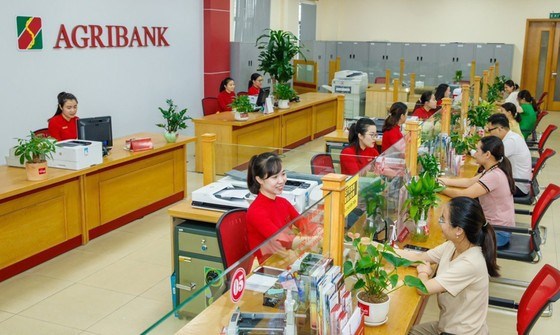
Vietnam’s commercial banks have been actively offering loans for green projects and expanding green credit by mobilizing capital from international lending institutions.
Green credit has received more and more attention, especially after 2012, when the Government approved the National Green Growth Strategy, and green credit and green banking have become an important orientation in the development strategy of the banking sector until 2025, with a vision until 2030.
VietCapital Bank has offered a preferential credit package worth VND 300 billion (almost USD 12.46 million) to support companies converting to green production models.
The bank has also added VND 500 billion to a package of green loans with a preferential interest rate of 8.9% per annum to lend to private clients and companies engaged in agricultural activities that apply technology or models that follow VietGAP standards. , GlobalGAP and organic farming.
Vietcombank has also recently provided VND 4 trillion in medium and long-term loans to PetroVietnam Electricity Corporation to finance the Nhon Trach 3 and 4 power plant projects in Nhon Trach district, Dong Nai province.
In March, Vietcombank and the Japan Bank for International Cooperation (JBIC) signed a cooperation agreement worth USD 300 million, adding capital to support renewable energy projects.
Nam A Bank also plans to grant green loans to electric vehicle, renewable energy and clean energy projects. It has just signed a cooperation agreement with the Global Climate Cooperation Fund (GCPF) to deploy a green credit program that provides preferential financing for environmentally friendly consumption and production. Currently, Nam A Bank’s green credit balance amounts to hundreds of billions of VND.
Since 2017, the Military Commercial Joint Stock Bank (MB) has provided loans for renewable energy projects. Currently, around 8-10% of the bank’s total outstanding loans are for green credit areas. MB aims to increase the share of green loans and loans for technological transformation to 15% of total outstanding loans by 2026.
The bank has also added VND 500 billion to a package of green loans with a prime rate of 8.9% per annum to lend to private customers and businesses engaged in agricultural activities.
Meanwhile, the outstanding green credit balance of the Joint Commercial Bank for Investment and Development of Vietnam (BIDV) at the end of 2022 was VND 63.8 trillion, accounting for 4.3% of total bank loans. and 13% of total green loans in Vietnam. BIDV also committed to expanding the loan portfolio for green and sustainable fields by 2025, which is expected to reach USD 3 billion, representing about 5% of BIDV’s total outstanding loans.

To facilitate the growth of green credit, the State Bank of Vietnam (SBV) published an action plan to implement the National Green Growth Strategy for the period 2021-2030 and a project on tasks and solutions to implement the results of the COP26 conference. .
Currently, 39 credit institutions provide green capital with a credit growth rate of more than 25% per year, higher than the average credit growth rate of the general economy.
In March, Vietcombank and the Japan Bank for International Cooperation (JBIC) signed a cooperation agreement worth USD 300 million, adding capital to support renewable energy projects.
However, the proportion of green credit is still very modest, with an outstanding green credit debt of more than VND 500.5 trillion, which represents only 4.32% of the total outstanding debt of the entire economy.
To explain the modest amount of green credit, a representative of the Department of Credit for Economic Sectors under the SBV said that the main reason is that there are no national regulations on criteria and lists of green projects for industries and fields as a basis for credit institutions. .
Supervision and risk management when granting green credits continue to have problems due to the lack of regulations and criteria to assess the impact of projects on the environment.
In addition, investing in green fields and industries, especially renewable energy and green buildings, often requires a long amortization period and high investment costs, which makes it difficult for banks to balance capital and ensure the short-term capital ratio for banks. medium and long term loans as prescribed.
According to experts, if Vietnam has a standardized management framework and a clearer definition of green projects, international banks will be able to support the Vietnamese government in promoting the green economy.
Article republished from the Vietnamese state media VNA in the framework of an agreement between both parties to share content. Link to the original article: https://en.vietnamplus.vn/laundromat-market-growing-in-vietnam/267470.vnp

Vietnam News Agency (VNA) is a state-owned news organization that publishes, disseminates official information, and collects and provides news through various forms of multimedia content for domestic and foreign media agencies.
The VNA operates under a consortium model with 15 news units for domestic and foreign service and representative offices in the 63 cities and provinces nationwide and 30 foreign offices on five continents.
VNA and ReporteAsia have an agreement for sharing and republishing content
Source: https://reporteasia.com/mercados/bursatil/2023/09/07/bancos-vietnam-unen-promover-credito-verde/

